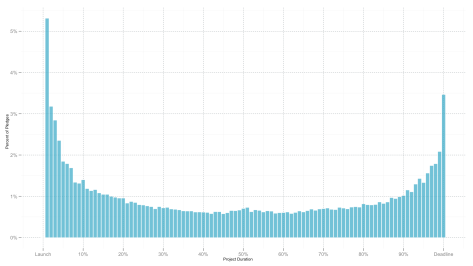If you need 100 backers, you need an audience of 1,000. What if you don’t have that kind of outreach?

When most of our clients crunch the numbers, they find their communication networks don’t match their needs (or wants). Since climbing stairs is easier than cliff, we recommend taking multiple small steps towards closing the gap.
- Consider the pared-down version of your project that matches the audience you do have. It’s easier to build your network when you have more than just an idea. Start with a more modest project and use that to help attract your audience.
- Make a 7-part plan to build your communication networks. Effective Frequency applies to building your network, too!
- Work with an extroverted buddy. Enthusiasm can be contagious. Get some help from someone who actually enjoys marketing.
- Brainstorm networks you can borrow. You always want to have a working list of Influencers – people already talking to your audience who can share your work with them. Build those relationships.
- Construct tiers of Stretch Goals. Momentum builds on success. Figure out how to break your campaign down into small bites that you and crowd can tackle one at a time.
Remember, it’s not whether a restaurant is big or small that makes it feel lively – it’s how packed it is. Ultimately, you’ll want to right-size the launch of your campaign to fit the crowd you can draw, and expand from there.
If you would like a free personalized diagnostic of your crowdfunding idea – a $125 value! – please fill out our Artist Questionnaire. We typically respond within two weeks.


















